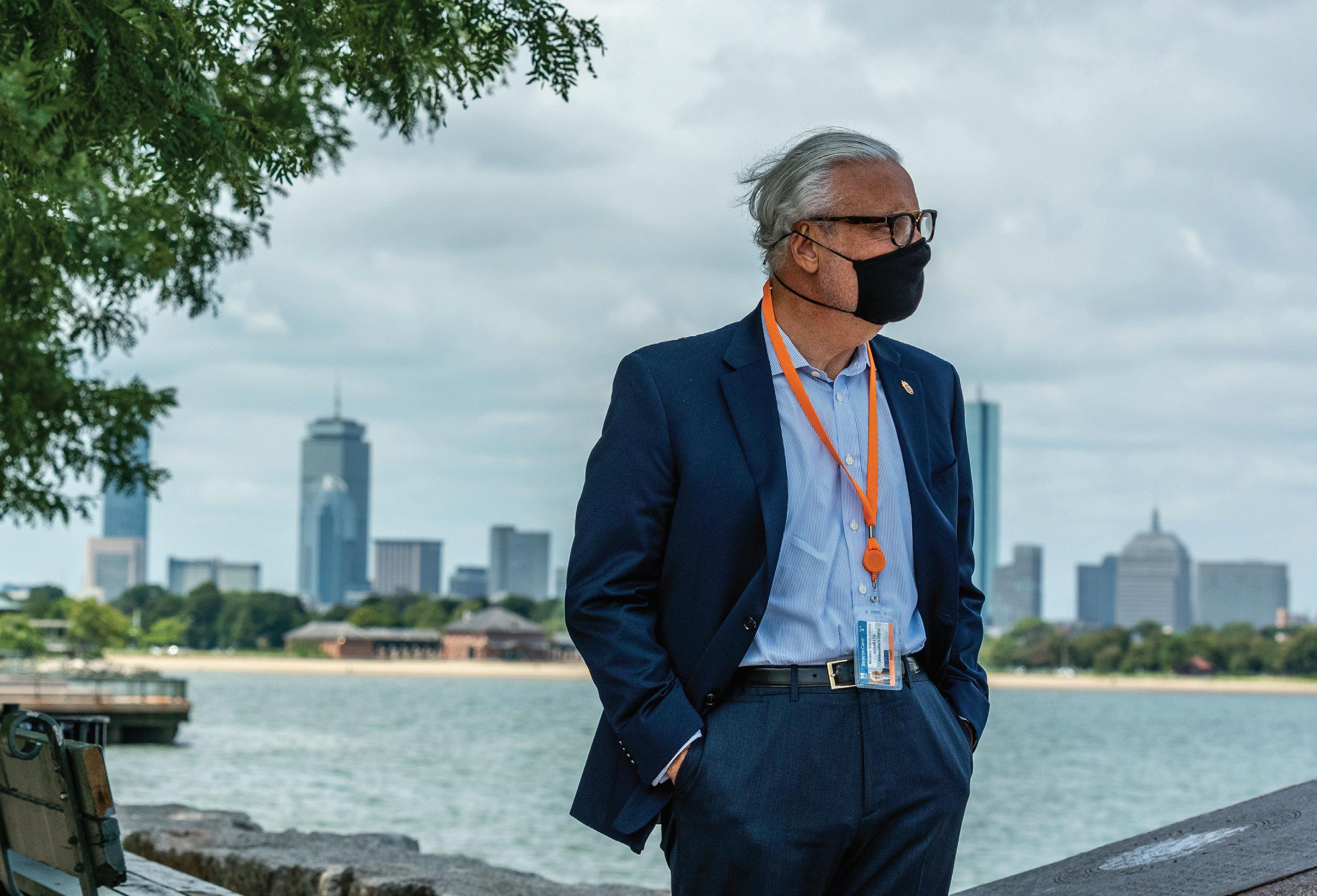Solution
The Harbor Islands
Inspired by nature, the Stone Living Lab is poised to be a global leader in nature-based solutions to sea-level rise. BY ELIS MULLINS
Nineteenth-century American writer Oliver Wendell Holmes once famously declared that Boston was “The Hub of the Solar System.” Now UMass Boston is poised to become a hub of a different kind. A consortium including UMass Boston faculty, the James M. and Cathleen D. Stone Foundation, City of Boston officials, the National Park Service, and Boston Harbor Now is launching an effort that could make the university a hub of research into the use of nature-based solutions to help mitigate the impacts of sea-level rise and extreme weather on coastal cities. This past summer they announced the founding of the Stone Living Lab for nature-based adaptive solutions to be tested and scaled in the Boston Harbor Islands parks. The project, which will include a community outreach and education component, is funded by a $5 million grant from the Stone Foundation. It will write the next chapter in Boston’s climate resiliency efforts.
This high tide flood along Boston’s waterfront occurred in October 2016. Photographer: Christian Merfeld
26
■
UMass Boston Fall 2020
“This unique new partnership will create opportunities to address flooding, enhance recreation, and improve local ecosystems, a trifecta of benefits that could have truly global reach,” said Cathy Stone, president of the James M. and Cathleen D. Stone Foundation. “A lot of cities throughout the world are interested in nature-based solutions. . . . As far as we can see, we’re the only lab doing this kind of full-scale research,” said Professor Paul Kirshen, director of the lab. “So we also want to become a hub, an international network on nature-based solutions for coastal flood protection.” The City of Boston has taken an aggressive approach to assessing the threat of climate change and exploring ways to protect the city and its coastal neighborhoods from flooding, particularly during storm surges. An initial report in 2016, Climate Ready Boston, found that the sea level in Boston Harbor could rise 8 inches by 2030,
An example of a nature-based solution: A living shoreline (a protected, stabilized coastal edge made of natural materials such as plants, sand, or rock that allows plants and animals to grow and live there) in front of Clippership Wharf in East Boston. Photographer: Liz Cook








